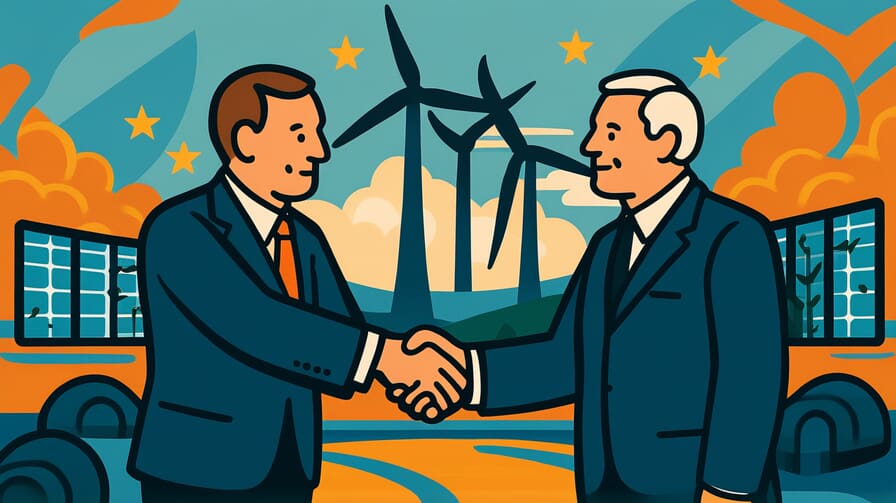[Disclaimer] This article is reconstructed based on information from external sources. Please verify the original source before referring to this content.
News Summary
The following content was published online. A translated summary is presented below. See the source for details.
The European Union and United States have unveiled key points of a new energy trade deal on July 30, 2025. The agreement aims to strengthen energy cooperation between the two partners, with a focus on liquefied natural gas (LNG) imports. The US is already the EU’s top LNG supplier, providing 55% of the EU’s LNG supply. The deal outlines plans to increase US LNG exports to Europe, improve energy infrastructure, and promote clean energy technologies. Both parties emphasize the importance of energy security and diversification of supply sources. The agreement also includes provisions for reducing greenhouse gas emissions and supporting the transition to renewable energy sources. This deal is seen as a significant step in reinforcing transatlantic energy ties and addressing global energy challenges.
Source: European Commission Press Corner
Our Commentary
Background and Context

The EU-US energy trade deal comes at a time of increasing global focus on energy security and climate change. In recent years, the EU has been working to reduce its dependence on Russian energy imports, particularly following geopolitical tensions. The United States, with its booming shale gas industry, has emerged as a key alternative supplier. This deal builds on existing energy partnerships and aims to create a more stable and sustainable energy future for both regions.
Expert Analysis
This agreement represents a significant shift in transatlantic energy relations and global energy markets. It has implications for geopolitics, economics, and environmental policy.
Key points:
- The deal strengthens the EU’s energy security by diversifying its supply sources.
- It provides a boost to the US LNG industry, potentially creating jobs and economic growth.
- The agreement includes provisions for clean energy, aligning with both parties’ climate goals.
Additional Data and Fact Reinforcement
To better understand the scale and impact of this deal, consider the following:
- In 2024, the EU imported approximately 140 billion cubic meters of LNG, with the US supplying about 77 billion cubic meters.
- The International Energy Agency projects global LNG trade to grow by 20% between 2023 and 2028.
- The EU aims to reduce greenhouse gas emissions by at least 55% by 2030 compared to 1990 levels.
Related News
This energy deal comes amid ongoing discussions about global energy transition and climate action. It follows the recent COP30 climate conference and coincides with the EU’s efforts to implement its Green Deal policies. The agreement also reflects broader trends in US-EU trade relations, which have been strengthening in various sectors.
Summary

The EU-US energy trade deal marks a significant step in transatlantic energy cooperation. It balances immediate energy security needs with long-term climate goals, potentially reshaping global energy markets. While the deal promises economic benefits and increased energy security, its success will depend on effective implementation and ongoing commitment from both parties to sustainable energy practices.


